20 Spotted Ducks That Stand Out With Their Unique Plumage
I love it when I can identify a unique feature shared by a group of ducks—it helps me understand their world in a clearer and more fascinating way. Lately, I’ve been focusing on one particular trait: spotting in ducks. Of course, there are species whose names already give it away, like the Spotted Whistling Duck and the Australian Spotted Duck, but what about the others? Which ducks truly have spots on their plumage? Keep in mind, a duck with bold, contrasting patches of color isn’t necessarily spotted—there’s a difference! So, how many spotted ducks can you think of? There are actually quite a few, and here are the ones I’m confident really do wear spots on their bodies.
- 1. Spotted Whistling Duck
- 2. Australian Spotted Duck
- 3. Cape Teal
- 4. African Black Duck
- 5. Maned Duck
- 6. Red Shoveler
- 7. Patagonian Crested Duck
- 8. Ringed Teal
- 10. Silver Teal
- 11. West Indian Whistling Duck
- 12. White-cheeked Pintail
- 13. Puna Teal
- 14. Marbled Duck
- 15. Chiloé Wigeon
- 16. Chestnut Teal
- 17. Brazilian Teal
- 18. Blue Duck (Whio)
- 19. Male Common Teal (Eurasian Teal)
- 20. Female Mandarin Duck
1. Spotted Whistling Duck
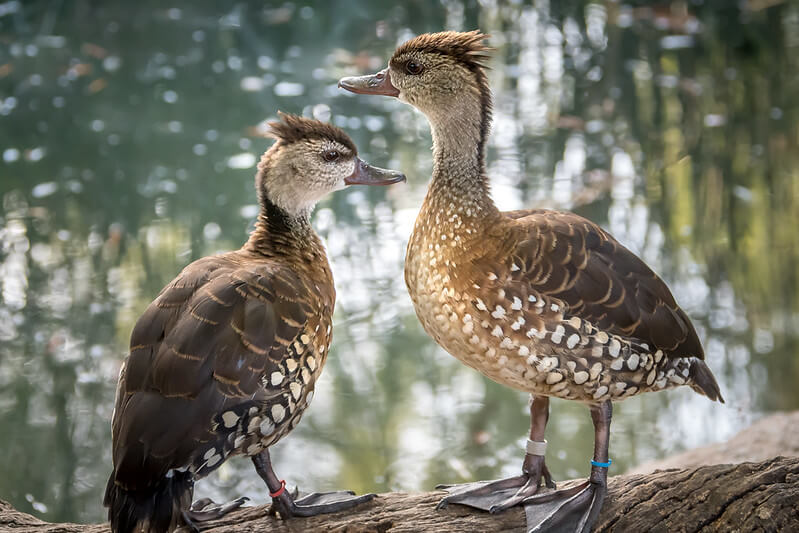
The Spotted Whistling Duck earns its name from the lovely white spots that stand out against its darker feathers. When it comes to ducks with true spotting, it’s definitely the first species that come to mind. These ducks are found in northern Australia and New Guinea, where they love quiet lagoons and forested wetlands. They’re gentle, shy birds, often hiding among reeds and trees during the day. When they fly at dusk, you can hear their soft, musical whistles echoing through the evening air—a lovely sound for any birdwatcher to enjoy.
2. Australian Spotted Duck
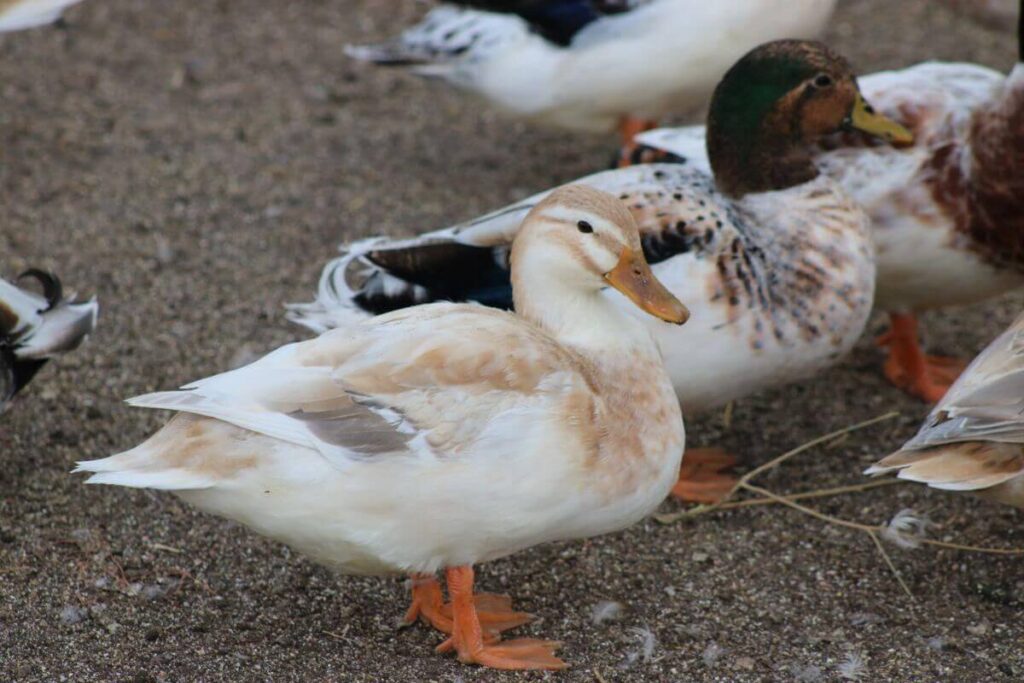
Another duck whose name comes from its lovely spotted pattern is the Australian Spotted Duck. This is a charming domestic breed, known for its pretty spotted plumage that can come in different color patterns—like silver, blue, or green. Each bird’s spots are unique, just like fingerprints! These ducks are small, active, and friendly. They’re great foragers, using their short, curved bills to search for insects and seeds. Their calm, gentle nature makes them a favorite among duck keepers and backyard bird lovers.
3. Cape Teal
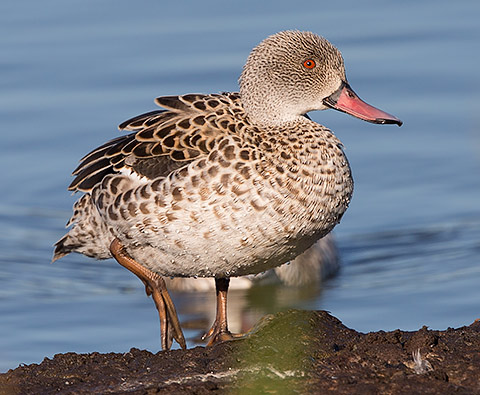
The Cape Teal is a soft gray duck dotted with tiny, dark speckles all over its body, giving it a beautifully spotted look up close. Found across southern Africa, this duck prefers shallow lakes and salt pans where it feeds on small crustaceans and aquatic plants. Its bill is a soft pink, matching nicely with its delicate plumage. Unlike some noisy duck species, the Cape Teal is rather quiet, moving calmly in pairs or small flocks.
4. African Black Duck
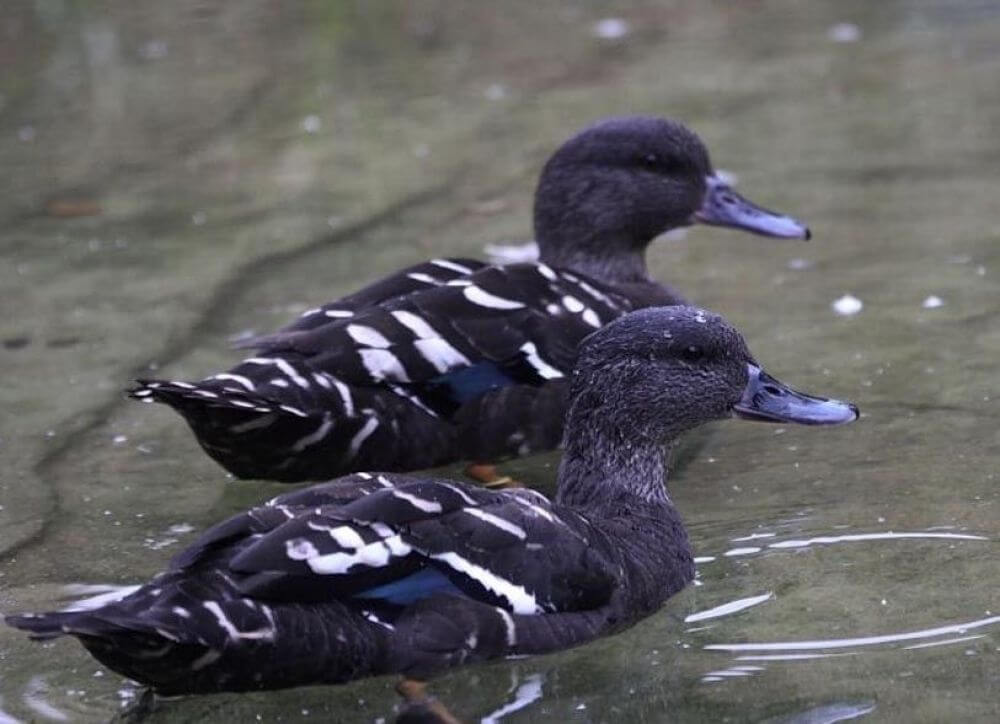
This sturdy, dark-feathered duck might not look flashy at first, but look closely and you’ll notice the pale spots scattered across its body and wings. The African Black Duck is strong and secretive, often found in fast-flowing streams and rivers across sub-Saharan Africa. Its powerful legs and broad bill help it swim against currents while feeding on aquatic insects and plants. It’s usually shy and quick to hide under overhanging rocks, so spotting one feels like a real reward for patient birdwatchers.
5. Maned Duck

Also called the Australian Wood Duck, the Maned Duck shows off a lovely spotted pattern on its chest and sides—especially the female, whose light brown feathers are neatly dotted with white spots. This duck prefers grassy wetlands and parklands rather than deep water, and it’s often seen grazing calmly like a goose. The male has a dark mane on his neck that gives the species its name. Maned Ducks are loyal birds, and are usually seen in pairs or family groups, quietly feeding on grass seeds near ponds and rivers.
6. Red Shoveler
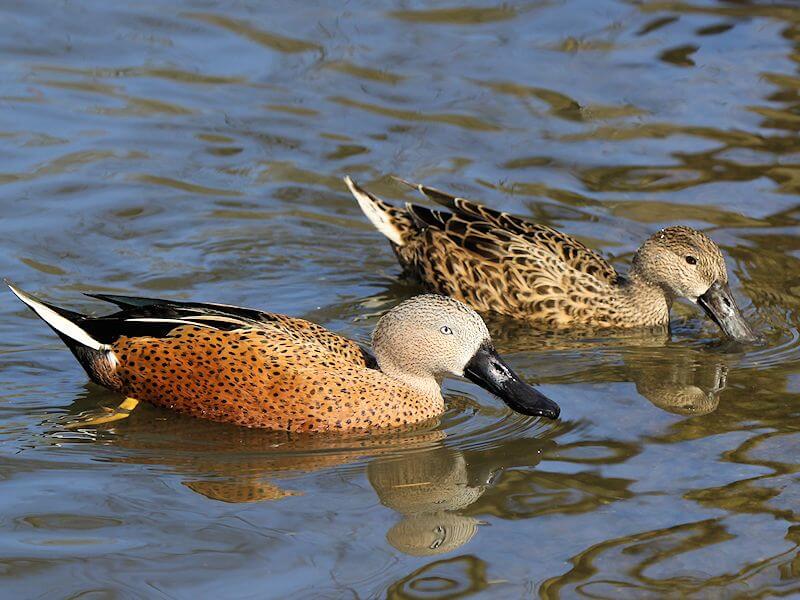
The Red Shoveler is a stunning duck from South America, easy to recognize by its wide, spoon-shaped bill and warm reddish-brown plumage sprinkled with tiny dark spots. Its bill acts as a clever feeding tool that lets the duck sift small plants and insects from the water. Red Shovelers are peaceful, and love gliding quietly across shallow lakes or feeding in small groups. When the light hits their feathers just right, you can see a soft copper glow that makes them stand out among other ducks.
7. Patagonian Crested Duck
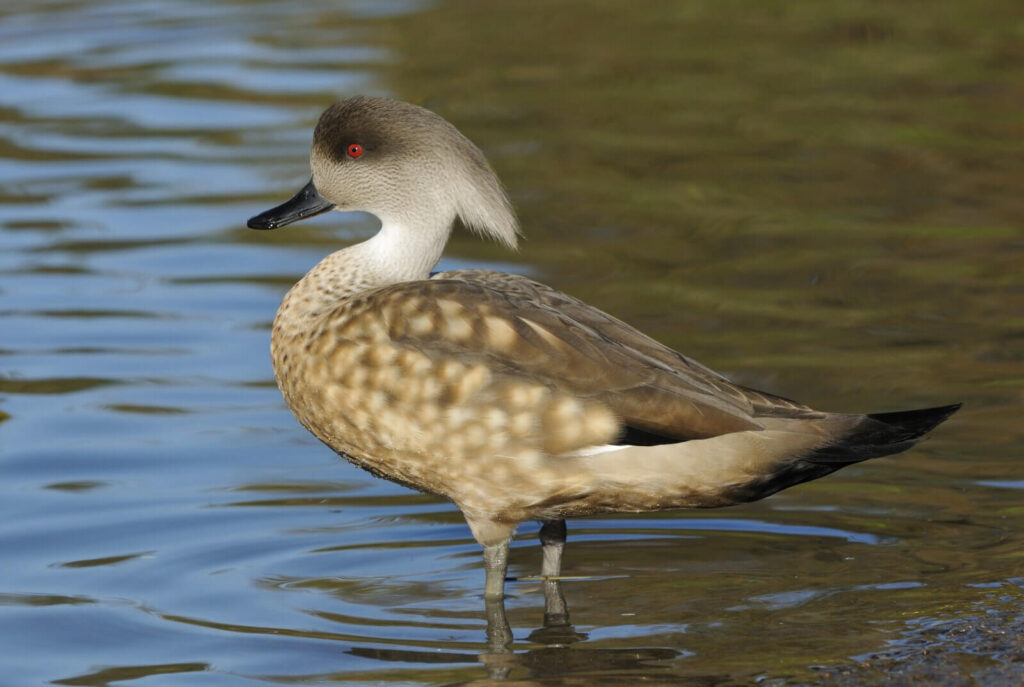
Native to the cool wetlands of southern South America, the Patagonian Crested Duck is a beautiful bird with soft gray-brown plumage patterned with darker mottles and spots. It gets its name from the elegant little crest on the back of its head, which gives it a slightly windswept look. These ducks are hardy and calm, perfectly adapted to windy Patagonian shores. They’re often seen dabbling for small aquatic creatures or resting near the water’s edge in pairs or small family groups.
8. Ringed Teal
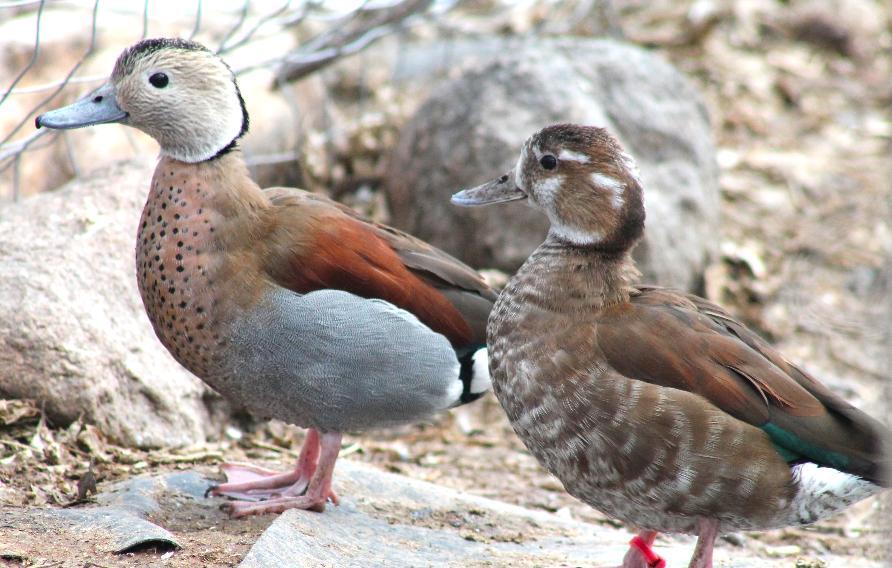
Delightfully dainty, the Ringed Teal is one of South America’s prettiest ducks. The male has a rich chestnut body dotted with small white spots, a striking blue-gray bill, and a bold black ring around his neck—hence the name. The female, though more softly colored, also carries a gentle spotted pattern on her sides. Ringed Teals love quiet forest ponds and flooded woodlands, and love perching in trees like wood ducks. Their calm, trusting nature has made them popular in aviaries worldwide.
10. Silver Teal

With its pale gray feathers patterned in soft black spots and lines, the Silver Teal looks as though it’s wearing a coat of fine lace. Found throughout South America, it prefers calm lakes and marshes rich with vegetation. Its pale blue bill has a distinctive black tip, and its face shows a charming contrast of cream and dark brown. Silver Teals are gentle and sociable, and are usually seen feeding or resting in small, relaxed flocks.
11. West Indian Whistling Duck
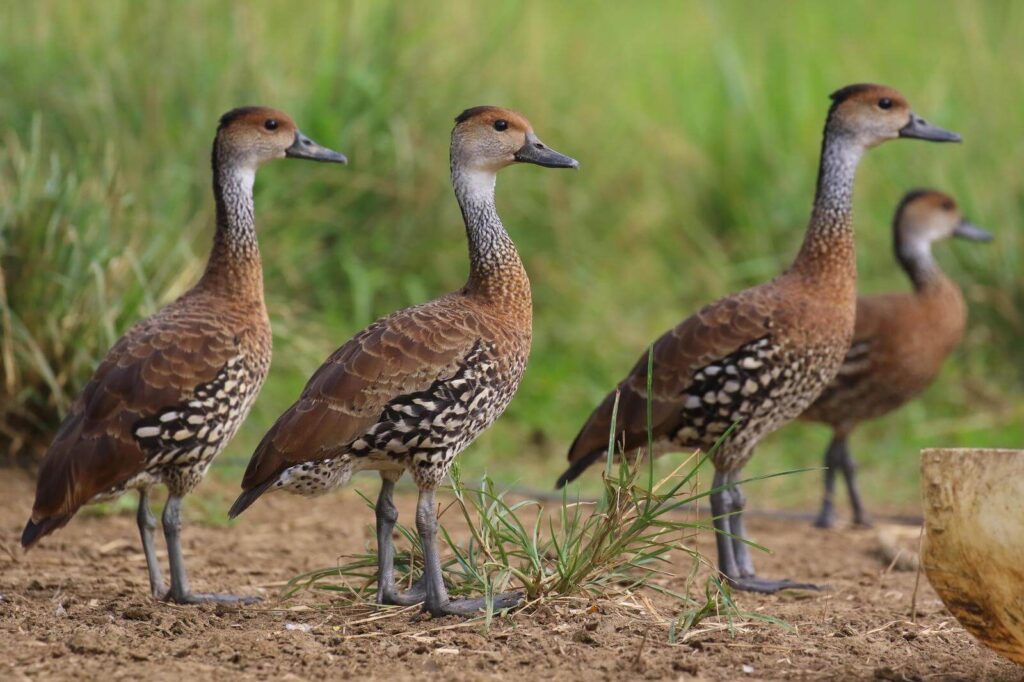
Tall and graceful, the West Indian Whistling Duck stands out with its long neck, spotted chest, and, of course, its soft whistling call. Found across the Caribbean, it enjoys mangroves, lagoons, and rice fields. This duck’s feathers are a warm mix of browns, tans, and creams, decorated with dark spots that blend perfectly into the wetland reeds. It’s mainly active at night, feeding quietly on seeds and plants under the moonlight—a serene and rather mysterious member of the whistling duck family.
12. White-cheeked Pintail
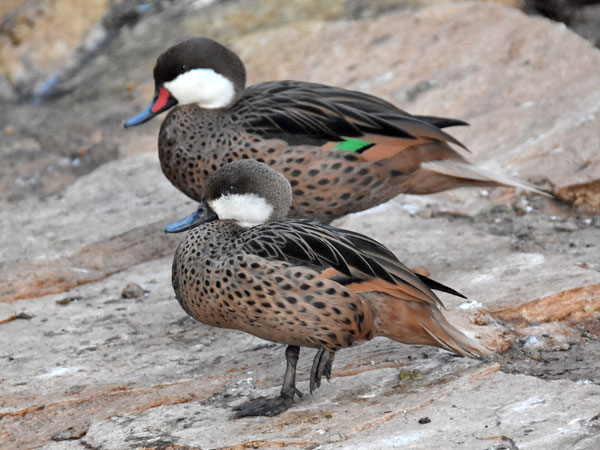
The White-cheeked Pintail is a graceful duck from the Caribbean and South America, easily recognized by its creamy white cheeks and beautifully patterned body. Its sides are covered in soft brown feathers dotted with darker spots, giving it a lovely freckled look. This pintail loves shallow coastal lagoons and mangroves, where it filters water through its blue-gray bill to find seeds and tiny aquatic creatures. It’s gentle and calm, and are usually seen paddling quietly in pairs or small groups.
13. Puna Teal
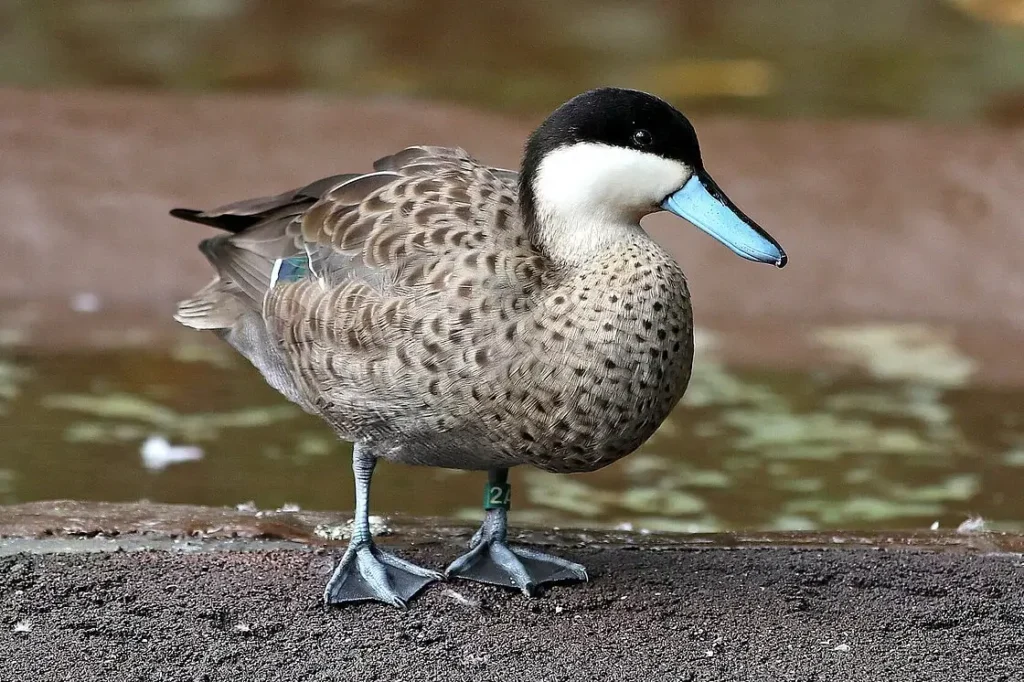
Living high up in the Andes, the Puna Teal is a small but striking duck that thrives in cool mountain lakes. Its body is pale gray with neat black spots, and its bright blue bill makes it instantly recognizable. The Puna Teal is peaceful and sociable, often mingling with other teal species. Watching them feed in the early morning light, dabbling calmly among reeds, is a true joy for any birdwatcher lucky enough to visit their high-altitude home.
14. Marbled Duck
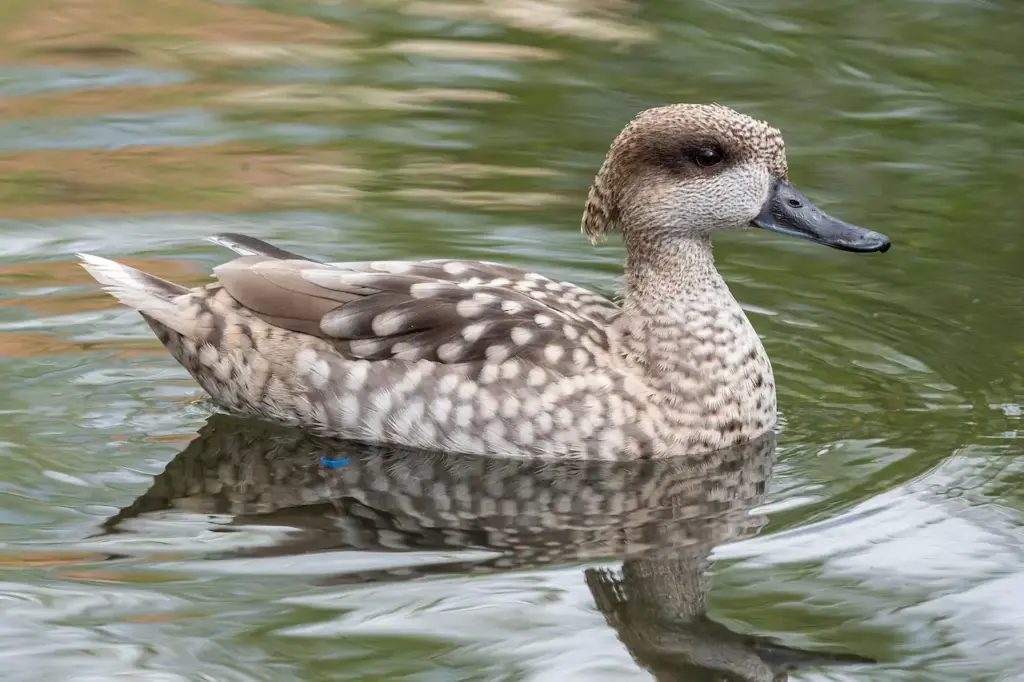
The Marbled Duck, also called the Marbled Teal, is a soft-toned beauty found in southern Europe, North Africa, and parts of Asia. Its plumage is covered in pale brown and cream spots that blend together like marbled stone—perfect camouflage in the shallow wetlands it calls home. Sadly, this gentle duck is considered vulnerable, with its numbers declining due to habitat loss.
Discover other vulnerable duck species: 17 Most Endangered Ducks in the World According To IUCN Red List
15. Chiloé Wigeon
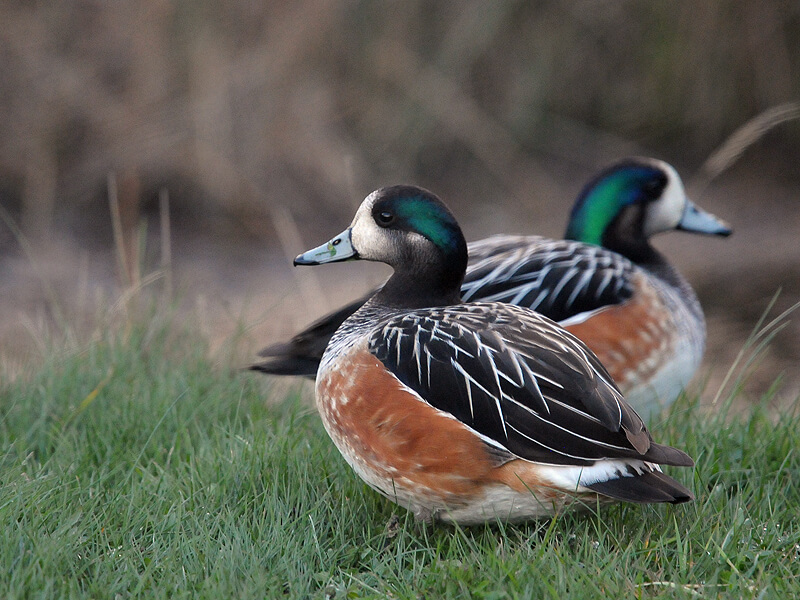
Named after Chile’s Chiloé Island, the Chiloé Wigeon is a colorful duck with a mix of metallic greens, soft grays, and spotted flanks. The fine black spots along its sides and chest add a touch of elegance to its already stunning plumage. These ducks are strong swimmers and excellent grazers, often feeding on grass near lakes and rivers. They form tight family bonds and migrate together, calling softly as they move in neat groups—a beautiful display of both color and companionship.
16. Chestnut Teal
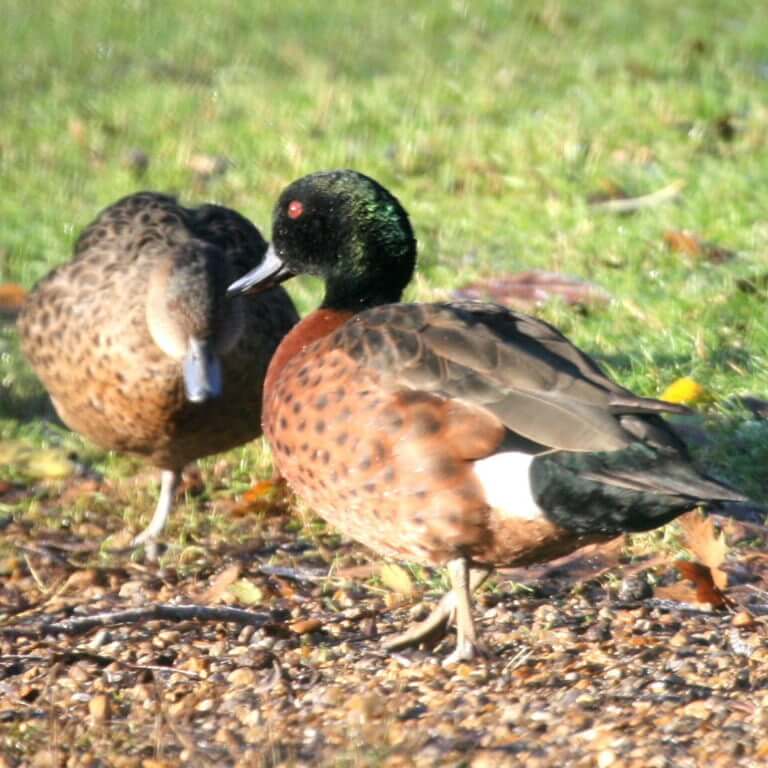
The Chestnut Teal of Australia is a gorgeous duck with deep chestnut coloring on the body and a glossy green head in males. If you look closely, you’ll notice dark speckles and spots along the chest and sides, giving its plumage extra richness. It prefers coastal wetlands and estuaries, where it feeds on insects, seeds, and small aquatic life. Known for its adaptability, the Chestnut Teal can live in both fresh and saltwater habitats—an impressive survival trait in the wild world of ducks.
17. Brazilian Teal

The Brazilian Teal is a charming duck found across South America, especially near quiet ponds and grassy wetlands. Its body is lightly spotted with dark markings, particularly along the chest and flanks, giving it a subtly patterned look. What makes this species extra special is that it forms strong pair bonds — you’ll often see a male and female swimming side by side, calling softly to each other. These ducks are mostly vegetarian, nibbling on aquatic plants and seeds while wading gracefully through shallow water.
18. Blue Duck (Whio)
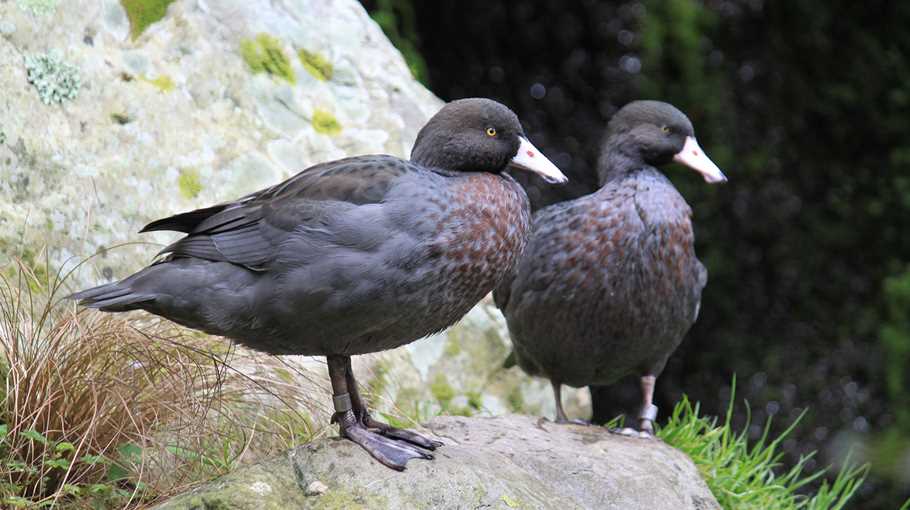
New Zealand’s Blue Duck, also known by its Māori name Whio, is a true river specialist. Instead of calm lakes, this rare duck loves fast-moving mountain streams, where it clings to slippery rocks with its strong feet. Its slate-blue feathers are flecked with dark spots and markings that blend perfectly with river stones — excellent camouflage against predators. Sadly, Whio numbers are low, and it’s considered endangered, but conservation work is helping bring this quiet river guardian back from the brink.
19. Male Common Teal (Eurasian Teal)

The male Common Teal, also called the Eurasian Teal, is a small, colorful duck full of life. When you look closely, you’ll notice fine dark spots sprinkled over its pale chest and flanks. During the breeding season, its green eye patch and chestnut head shine beautifully in the sunlight. These teal love shallow lakes and marshes, and you will often see them dabbling for seeds and insects.
20. Female Mandarin Duck
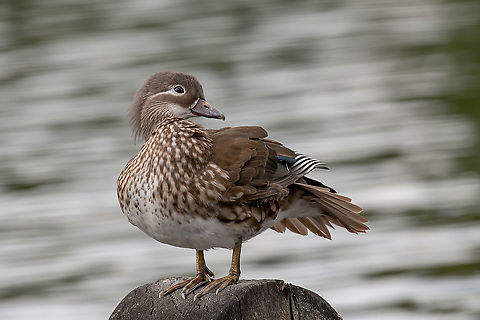
While the male Mandarin Duck steals the show with his vivid colors, the female Mandarin Duck deserves admiration for her delicate beauty. She’s covered in soft gray-brown feathers dotted with neat white spots along her sides and breast. These gentle markings make her look quietly elegant and help her blend perfectly into forest ponds during nesting. She’s a devoted mother, often leading her ducklings bravely from tree-top nests down to the water below — a sight that always amazes anyone lucky enough to see it.
